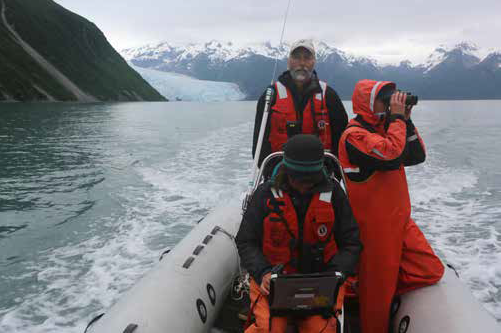The Gulf Watch Alaska’s Long-Term Monitoring of Alaska Nearshore Ecosystems project was featured in both the spring and summer 2019 issues of the Department of Interior’s (DOI) Newswave, a quarterly newsletter from the DOI featuring ocean, Great Lakes, and coastal activities across the Bureaus. The spring 2019 issue included two special feature stories: Long-Term Monitoring of Nearshore Marine Ecosystems: Gulf of Alaska 30 Years Since Exxon Valdez Oil Spill (p. 15) and Seabird Die-Offs are Becoming More Extreme (p. 16), both written by Heather Coletti (NPS and GWA researcher).
The articles discuss the role of the Exxon Valdez Oil Spill Trustee Council’s long-term monitoring program in providing foundational information for ecosystem-scale understanding of not only the effects of the spill but also for detecting other patterns of environmental change. Through the Alaska Nearshore Ecosystems project, researchers have closely monitored the recovery of marine bird and seabird species impacted by the Exxon Valdez oil spill. Many seabirds rely heavily on habitats and prey associated with the marine nearshore ecosystem. These species are top-level consumers of fish and marine invertebrates, such as mussels, clams, snails, and limpets. Because of these characteristics, these birds are good indicators of change in the marine ecosystem.
Through this monitoring, one of the largest and most extensive seabird die-off episodes in Alaska ever recorded was witnessed (i.e. murres in the Gulf of Alaska in 2015–16). This event, along with several other die-offs in Alaska, are concurrent with above-average sea surface temperatures in the region, which could have resulted in starvation due to shifts in the seabird food supply among other changes.
A photo of Heather and the Alaska Nearshore Ecosystems project team conducting a marine bird and mammal survey can be seen in the summer 2019 photo edition (p. 13).



